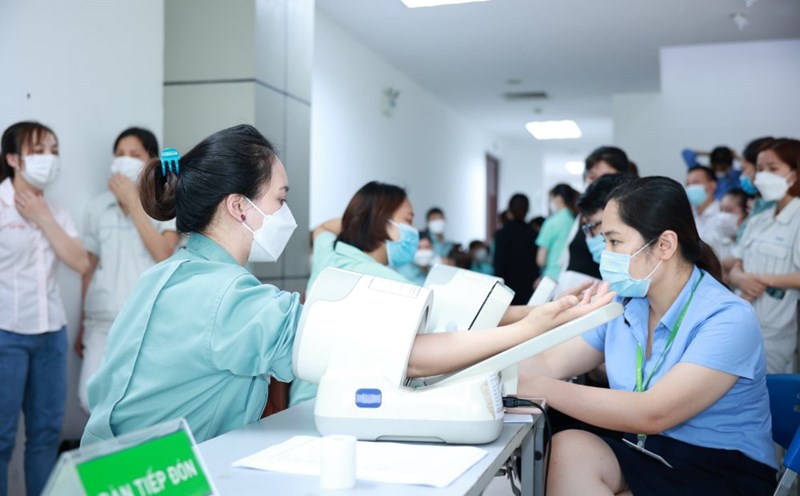On November 25, the National Assembly listened to the Minister of Health present a report on the Investment Policy of the National Target Program on Health Care, Population and Development for the period 2026-2035.
According to the Government's proposal, the beneficiaries of the Program are all Vietnamese people, with priority given to the following subjects: people living in disadvantaged areas, mountainous areas, border areas, islands; disadvantaged people; mothers, children; adolescents; people with revolutionary contributions; the elderly.
The report also shows that the total budget for implementing the program in the entire period of 2026-2035 is 125,478 billion VND.
Of which, the 2026-2030 period is 88,635 billion VND (central budget 68,000 billion VND, local budget 20,041 billion VND). The total capital for the 2031-2035 period is expected to be 36,843 billion VND.
Minister of Health Dao Hong Lan said that the program implementation period is 10 years, from 2026 to the end of 2035, divided into 2 stages: 2026-2030 and 2031-2035.
Accordingly, the central budget (NSTW) supports localities to receive balanced supplements from the NSTW. Prioritize supporting the Ministry of Natural Resources and Environment to implement the program in areas with particularly difficult economic conditions, ethnic minority and mountainous areas, border areas, and islands.
The allocation of the state budget to implement the Program must comply with the goals, targets, tasks, activities of the Program, annual plans, actual situations and the ability to balance the state budget.
During the implementation process, the Government continues to balance the State budget and submit it to competent authorities for consideration and priority for additional capital for the Program.

The general goal of the program is to improve the physical and mental health, stature, longevity and quality of life of the people; ensure that all people are managed, have quality primary health care, people proactively take care of themselves and improve their health; limit diseases, prevent diseases early, from afar, right at the facility.
In addition, the program also aims to solve priority population problems, proactively adapt to aging, improve population quality; increase care for disadvantaged groups.
The program also sets out 10 specific goals, including the rate of people having electronic health books and life cycle health management by 2030 reaching 100% and maintained until 2035;
The rate of commune, ward and special-use health stations nationwide implementing prevention, management and treatment of some non-communicable diseases is fully regulated according to the guided process to reach 100% by 2030 and maintain until 2035.
The Government also sets a target of increasing the number of disadvantaged and vulnerable people accessing and using services at social care facilities by 70% compared to 2025 and increasing by 90% compared to 2030.
The program is divided into 5 component projects, including improving the effectiveness of the disease prevention and health improvement system; Improving the quality of social care for the disadvantaged.
Regarding specific mechanisms and policies, the National Assembly will decide on the total estimate for the Program; the Prime Minister will assign the total estimate to the provincial level and adjust it when necessary; the provincial level is responsible for allocating to the commune level on the basis of decentralization and delegation of authority principles.
The Government strengthens inspection and supervision to ensure timely, effective implementation, in accordance with the situation and meeting practical requirements; Other specific mechanisms and policies are issued in shortened order and procedures.











